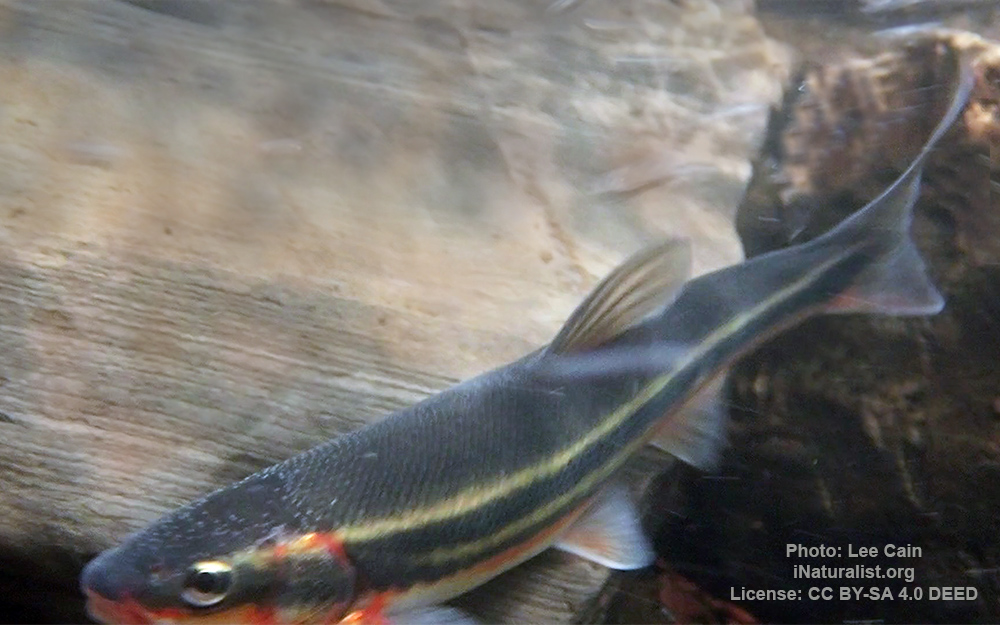Peamouth
(Mylocheilus caurinus)

Classification
General data
Mylocheilus caurinus, the peamouth, peamouth chub, redmouth sucker or northwestern dace, is a species of freshwater ray-finned fish from the family Cyprinidae, the carps and minnows, that is found in western North America. It is the only species in its genus.
The peamouth is a slender fish, with a somewhat compressed body and a subterminal mouth, large eyes, a rounded snout and a forked tail. It has a dark back, contrasting with silvery underparts separated by two dusky, longitudinal stripes.
The mouth is reddish at the corners where there are small barbels.
When breeding the mature males develop a red stripe along the sides on the belly, mouth, gill cover and pectoral fin base.
The dorsal fin and the anal fin each have 8 soft rays and the lateral line has 66-84 scales.
They can grow to 36 centimetres (14 in) in total length.
The peamouth occurs in western North America from the Mackenzie River in the North West Territories, the Nass River and the Peace River in British Columbia and the Columbia River drainage in Washington state, Oregon, Montana and Idaho. It is relatively tolerant of salt water and this has allowed it to colonise rivers on Vancouver Island and other islands off the coast of British Columbia. It has been introduced to the Redwood National Park in California.
The peamouth can be found in the shallow, weedy zones of lakes and rivers, where it is most common among vegetation. It is usually found near the bed in depths of less than 60 feet (18 m), although in winter they will move to the deeper parts of lakes.












